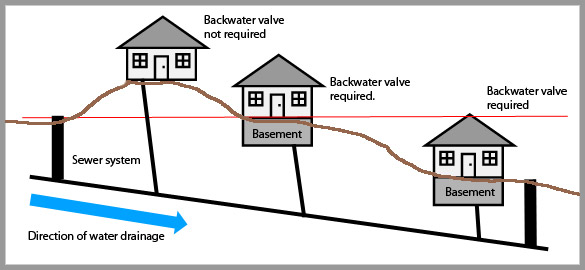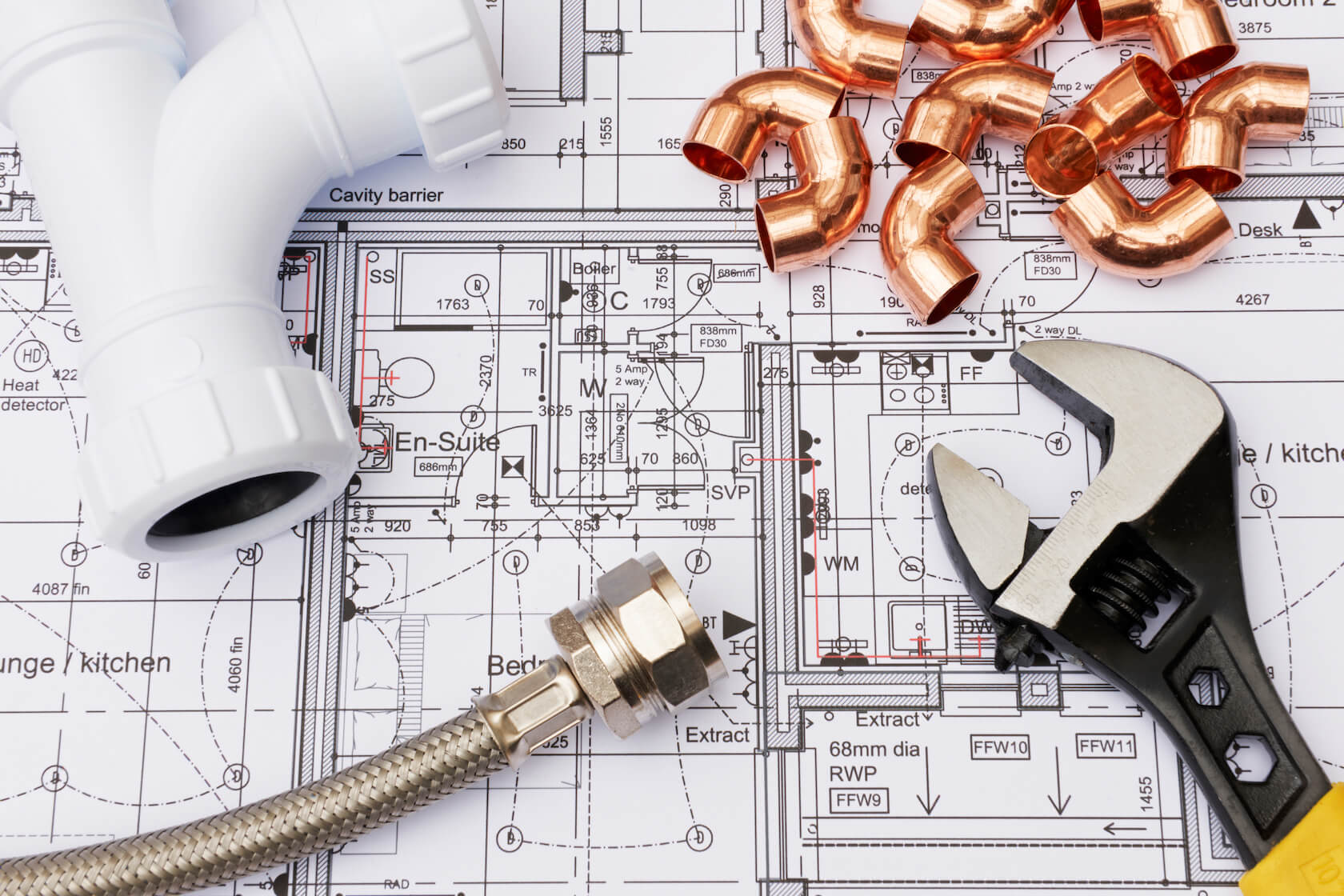Everything You Need to Know to Your Property's Plumbing System Anatomy
Everything You Need to Know to Your Property's Plumbing System Anatomy
Blog Article
What are your opinions regarding Plumbing Installation 101: All You Need to Know?

Recognizing just how your home's pipes system works is vital for every house owner. From providing tidy water for drinking, cooking, and bathing to safely getting rid of wastewater, a well-maintained plumbing system is important for your household's wellness and convenience. In this detailed guide, we'll explore the elaborate network that composes your home's plumbing and deal suggestions on maintenance, upgrades, and dealing with usual problems.
Introduction
Your home's pipes system is greater than simply a network of pipelines; it's a complex system that ensures you have access to clean water and effective wastewater elimination. Recognizing its components and how they work together can aid you protect against costly repair services and ensure everything runs smoothly.
Fundamental Parts of a Plumbing System
Pipes and Tubing
At the heart of your plumbing system are the pipelines and tubing that carry water throughout your home. These can be made from different products such as copper, PVC, or PEX, each with its benefits in terms of resilience and cost-effectiveness.
Fixtures: Sinks, Toilets, Showers, etc.
Components like sinks, commodes, showers, and bathtubs are where water is used in your home. Understanding how these fixtures connect to the plumbing system aids in detecting problems and preparing upgrades.
Valves and Shut-off Points
Shutoffs manage the flow of water in your plumbing system. Shut-off shutoffs are critical during emergencies or when you require to make repair work, permitting you to separate parts of the system without interrupting water flow to the entire residence.
Water System System
Main Water Line
The major water line links your home to the municipal water system or a private well. It's where water enters your home and is distributed to different fixtures.
Water Meter and Stress Regulator
The water meter measures your water use, while a pressure regulatory authority makes sure that water moves at a safe stress throughout your home's plumbing system, preventing damage to pipelines and fixtures.
Cold Water vs. Warm water Lines
Recognizing the distinction between cold water lines, which provide water directly from the primary, and warm water lines, which bring warmed water from the water heater, aids in fixing and planning for upgrades.
Water drainage System
Drain Pipeline and Traps
Drain pipelines carry wastewater far from sinks, showers, and bathrooms to the drain or septic system. Traps stop sewer gases from entering your home and likewise catch debris that can trigger obstructions.
Ventilation Pipes
Air flow pipes permit air into the water drainage system, protecting against suction that might reduce drainage and trigger catches to empty. Appropriate air flow is essential for maintaining the honesty of your plumbing system.
Significance of Correct Drainage
Making sure correct drainage avoids back-ups and water damages. Frequently cleansing drains and maintaining catches can protect against pricey repair work and prolong the life of your plumbing system.
Water Heater
Types of Water Heaters
Hot water heater can be tankless or typical tank-style. Tankless heaters heat water as needed, while storage tanks save warmed water for immediate use.
Updating Your Pipes System
Factors for Upgrading
Upgrading to water-efficient fixtures or replacing old pipes can enhance water high quality, minimize water expenses, and boost the worth of your home.
Modern Pipes Technologies and Their Advantages
Explore technologies like smart leak detectors, water-saving bathrooms, and energy-efficient water heaters that can save money and minimize environmental effect.
Price Factors To Consider and ROI
Calculate the upfront prices versus lasting savings when considering plumbing upgrades. Several upgrades pay for themselves via reduced energy costs and less repairs.
How Water Heaters Attach to the Pipes System
Recognizing just how hot water heater attach to both the cold water supply and warm water circulation lines assists in identifying problems like insufficient hot water or leakages.
Upkeep Tips for Water Heaters
Regularly flushing your hot water heater to eliminate sediment, checking the temperature settings, and inspecting for leakages can expand its life-span and boost energy effectiveness.
Common Pipes Concerns
Leaks and Their Causes
Leaks can take place due to aging pipelines, loosened installations, or high water pressure. Addressing leakages immediately avoids water damage and mold and mildew development.
Obstructions and Clogs
Blockages in drains pipes and toilets are typically triggered by purging non-flushable items or a buildup of grease and hair. Using drain screens and being mindful of what drops your drains pipes can protect against blockages.
Indications of Plumbing Issues to Watch For
Low water stress, sluggish drains pipes, foul odors, or uncommonly high water expenses are signs of possible pipes issues that should be resolved promptly.
Pipes Maintenance Tips
Normal Assessments and Checks
Schedule yearly pipes evaluations to capture problems early. Search for indicators of leakages, corrosion, or mineral build-up in faucets and showerheads.
Do It Yourself Maintenance Tasks
Straightforward tasks like cleaning tap aerators, checking for commode leaks using color tablet computers, or protecting revealed pipes in cold environments can prevent significant plumbing concerns.
When to Call an Expert Plumber
Know when a pipes issue calls for expert expertise. Trying complex repair work without correct knowledge can bring about more damages and higher fixing costs.
Tips for Lowering Water Usage
Straightforward practices like taking care of leakages quickly, taking much shorter showers, and running full loads of washing and recipes can save water and reduced your utility bills.
Eco-Friendly Plumbing Options
Think about lasting plumbing materials like bamboo for floor covering, which is durable and eco-friendly, or recycled glass for kitchen counters.
Emergency Preparedness
Actions to Take During a Plumbing Emergency
Know where your shut-off shutoffs lie and how to shut off the water system in case of a burst pipe or significant leakage.
Significance of Having Emergency Situation Calls Useful
Keep call information for regional plumbing technicians or emergency situation solutions readily available for fast feedback during a pipes crisis.
Environmental Effect and Preservation
Water-Saving Components and Appliances
Setting up low-flow taps, showerheads, and commodes can dramatically lower water use without sacrificing efficiency.
Do It Yourself Emergency Fixes (When Appropriate).
Temporary fixes like using duct tape to patch a dripping pipeline or positioning a bucket under a dripping faucet can minimize damage up until an expert plumbing professional gets here.
Verdict.
Recognizing the makeup of your home's pipes system encourages you to keep it properly, conserving money and time on fixings. By adhering to normal upkeep regimens and remaining educated concerning contemporary plumbing innovations, you can ensure your plumbing system operates efficiently for several years to find.
The Anatomy of Your Home s Plumbing System
Understanding the anatomy of your home s plumbing system is essential for any homeowner. It not only helps in identifying potential issues but also facilitates effective communication with professionals when repairs or upgrades are needed. Your home s plumbing system is more than just pipes and faucets; it s a complex network that ensures the efficient and hygienic flow of water in and out of your house. In this blog, we ll dissect the crucial components of your home s plumbing system. For those in Antelope Valley, Brock Plumbing is your trusted partner for all your plumbing needs, ensuring your system functions smoothly and efficiently.
Water Supply System
Main Water Line: This is where your home s plumbing system begins. The main water line connects your home to the public water supply or a private well. Pipes and Shut-off Valves: Pipes distribute water throughout your home. Shut-off valves are crucial for controlling the flow of water and making repairs without shutting off the entire system. Drainage System
Drain Pipes: These pipes carry waste and water away from sinks, toilets, and showers. Vents: Vents allow sewer gases to escape and help maintain proper pressure in the drainage pipes, ensuring efficient flow of wastewater. Traps: Every fixture has a trap, a U-shaped pipe that holds water and prevents sewer gases from entering your home. The most common is the P-trap under sinks. Fixtures and Appliances
Fixtures and appliances are the most interacted with parts of your plumbing system. They include sinks, toilets, showers, dishwashers, and washing machines. Each fixture and appliance has its own supply and drainage connection, ensuring they receive clean water and can dispose of wastewater effectively.
Water Heating System
Your water heater is a crucial component, providing hot water to various fixtures and appliances in your home. It can be tank-based or tankless, with each type having its own set of advantages and maintenance requirements. Regular maintenance is essential to ensure efficient operation and extend the lifespan of the unit.
Sump Pump
In areas prone to flooding or with high water tables, a sump pump is an essential part of the plumbing system. It s installed in the lowest part of your basement or crawlspace and pumps out water that accumulates, preventing flooding and protecting your home from water damage.
Septic System
Homes that are not connected to a municipal sewer system have a septic system and an underground wastewater treatment structure. Understanding how to maintain your septic system is crucial to prevent backups, odors, and early system failure.
Conclusion
Your home s plumbing system is a complex and essential network, ensuring the efficient and hygienic flow of water in and out of your property. Understanding its key components helps in maintaining it properly and identifying issues before they escalate into major problems. For residents in Antelope Valley, Brock Plumbing is dedicated to providing top-notch services, ensuring that every part of your plumbing system is in perfect working order. Trust our team of professionals to handle all your plumbing needs, ensuring your home remains comfortable, safe, and well-maintained.
https://brockplumbinganddrains.com/blog/the-anatomy-of-your-homes-plumbing-system/

We had been made aware of that write-up about through a friend on our other web page. Sharing is good. Who knows, you might be doing someone a favor. Bless you for being here. Come back soon.
Call Today Report this page